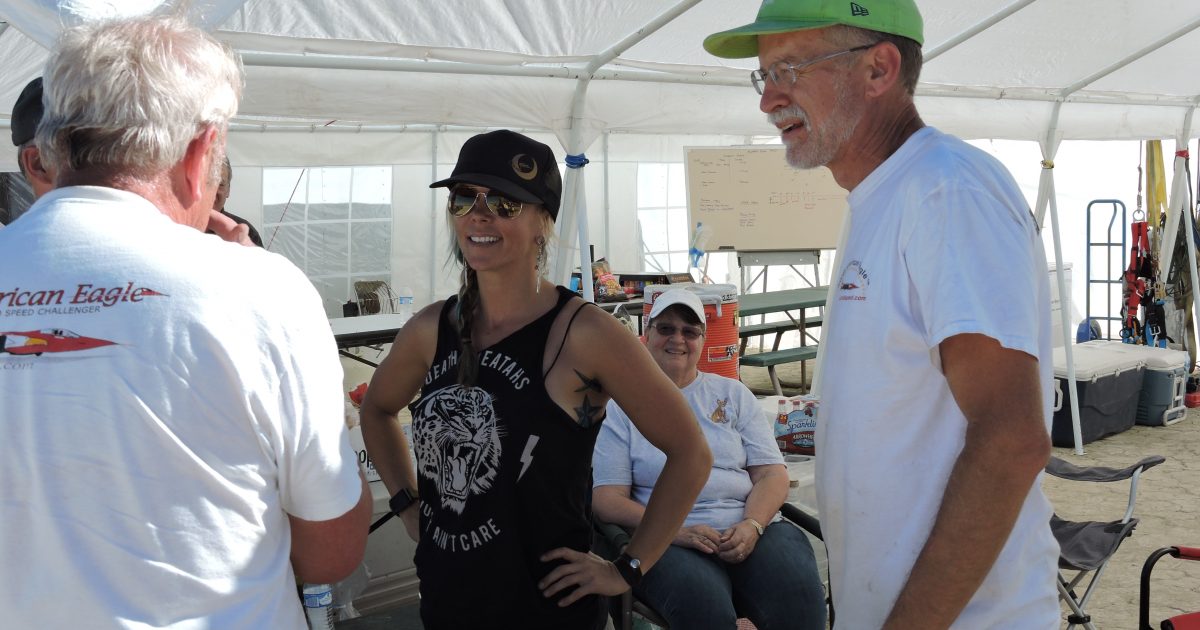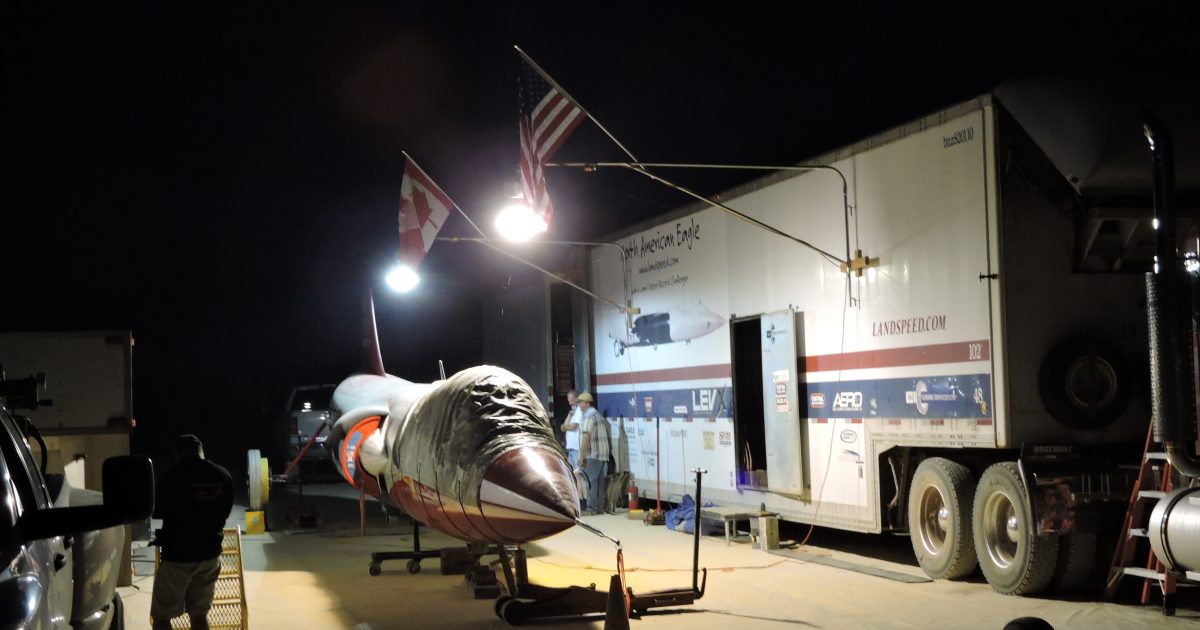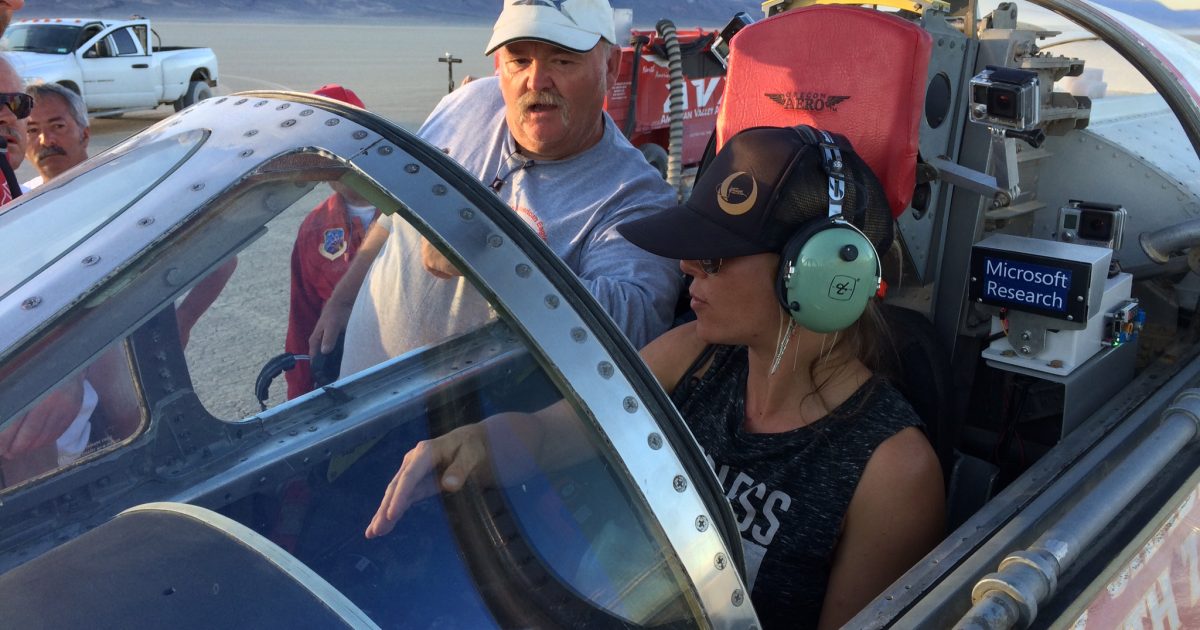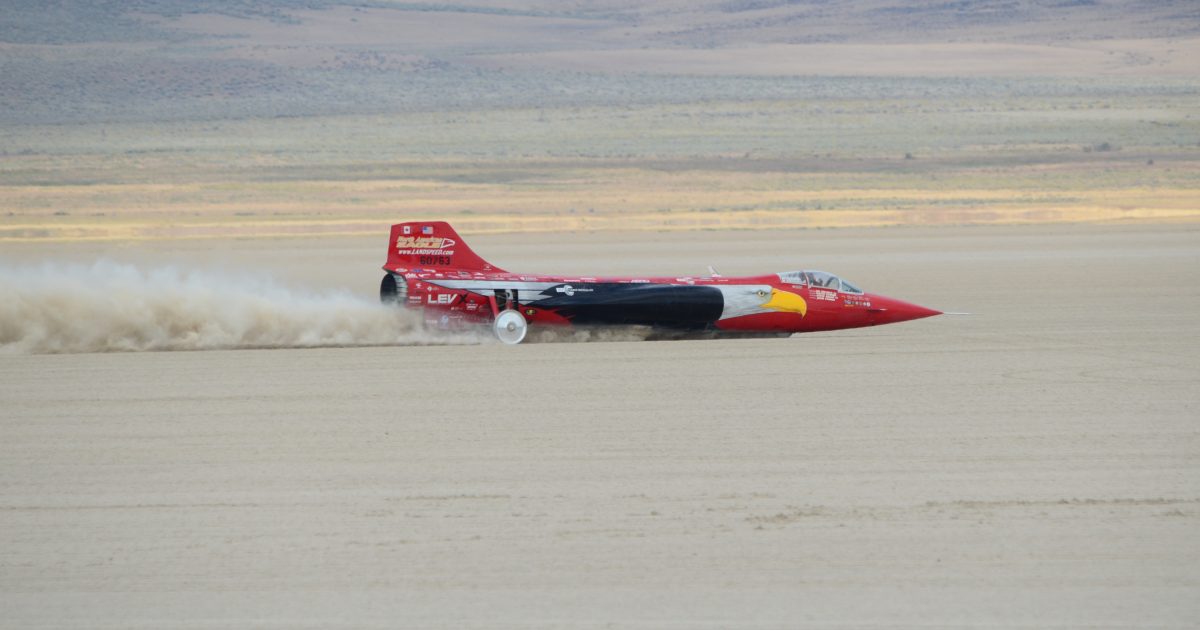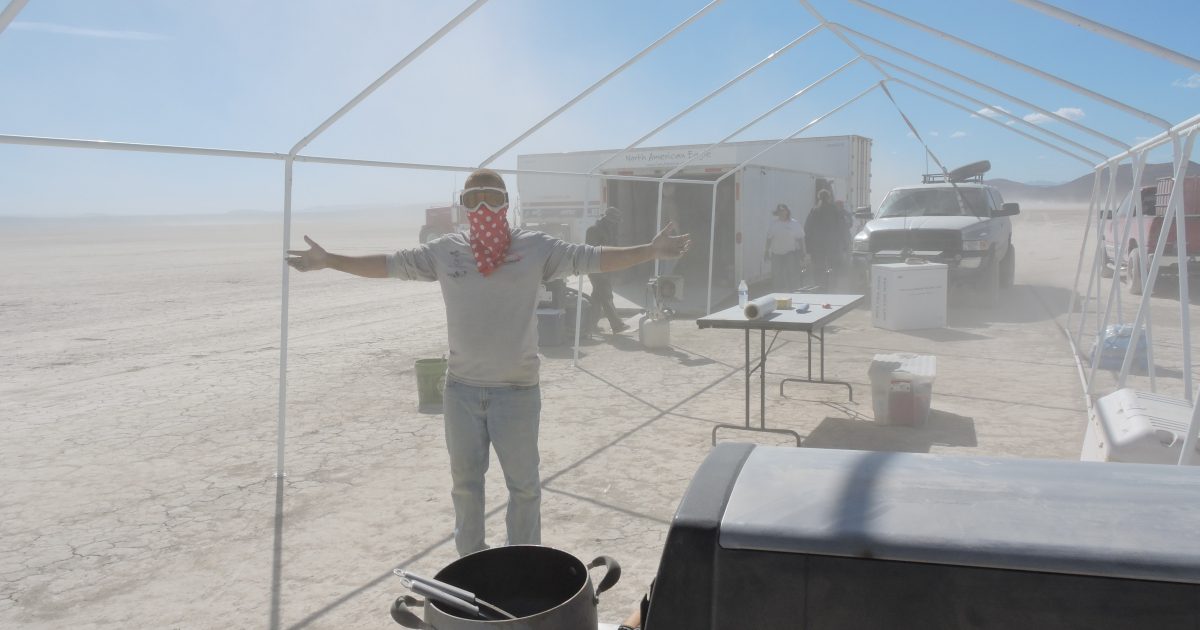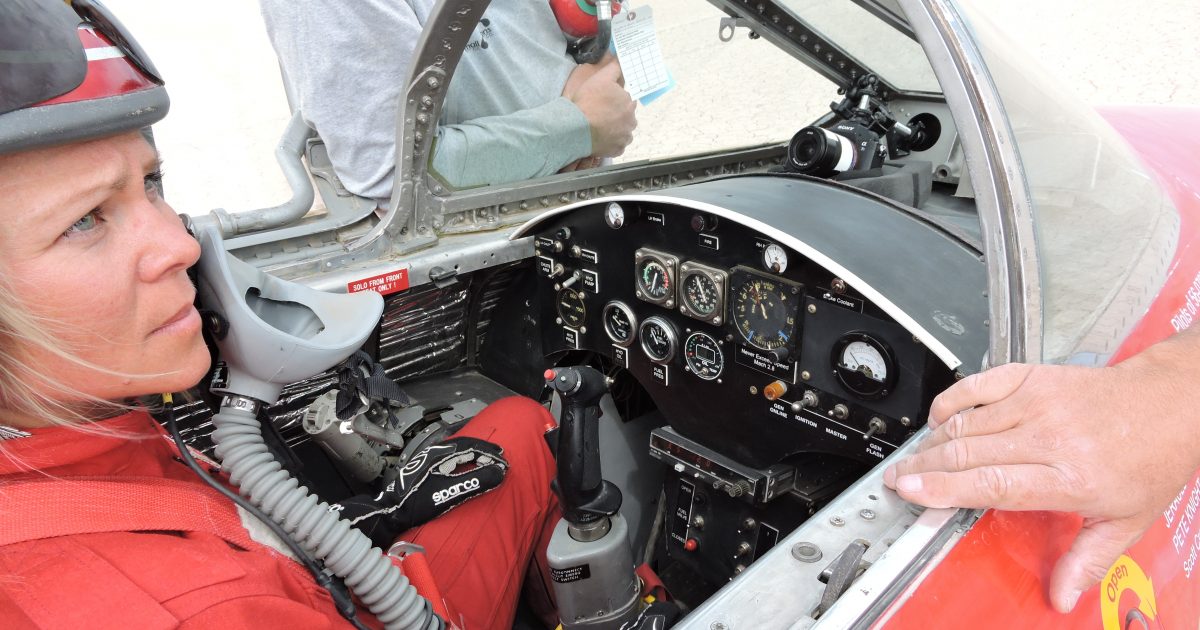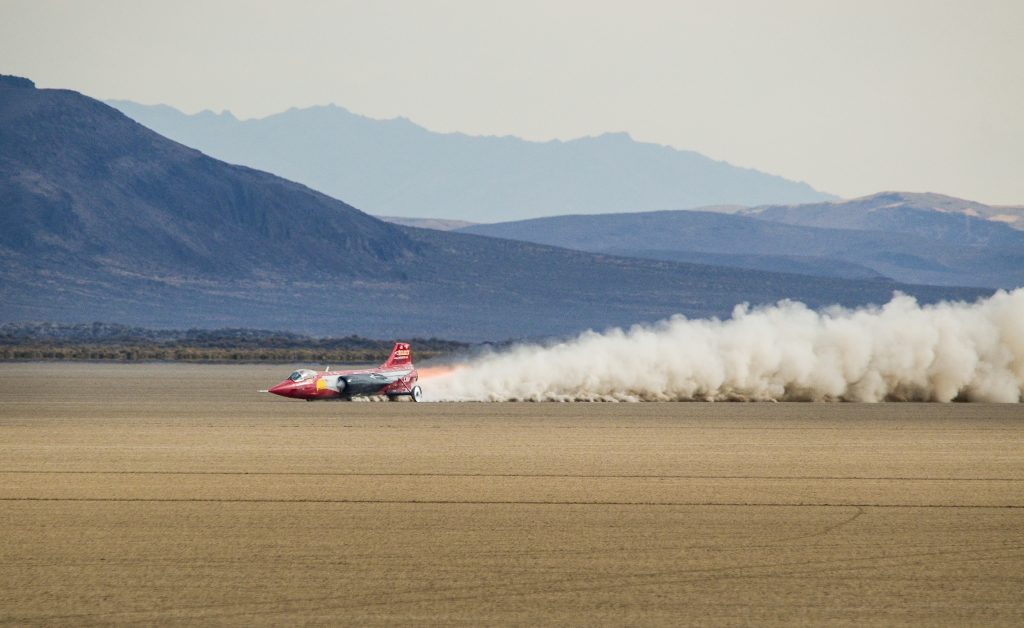
Supersonic dreams at 477 mph: Jessi Combs drives her fastest speed ever, as fans tune in worldwide
A prize-winning motorsports athlete and all-around beast on wheels, Jessi Combs has tackled brutal rock walls and sand pits in grueling off-road marathons. She has raced hundreds of miles through the Sahara Desert with only an old-fashioned compass and map for navigation. She has built, driven and raced everything from motorcycles and monster trucks to hot rods and rally cars.
But last week, Combs drove a stunning 477.59 miles per hour — her fastest speed ever — as part of a complex, ambitious goal to become the fastest woman on Earth. Combs drove the North American Eagle, a sleek, powerful, 7-ton race car built from a 1950s fighter jet, on a course in the remote Alvord Desert in Oregon.
“Let this be a testament that girls can do anything they set their minds to, especially with such a knowledgeable and dedicated team supporting them to push those limits,” says Combs of her new personal best.
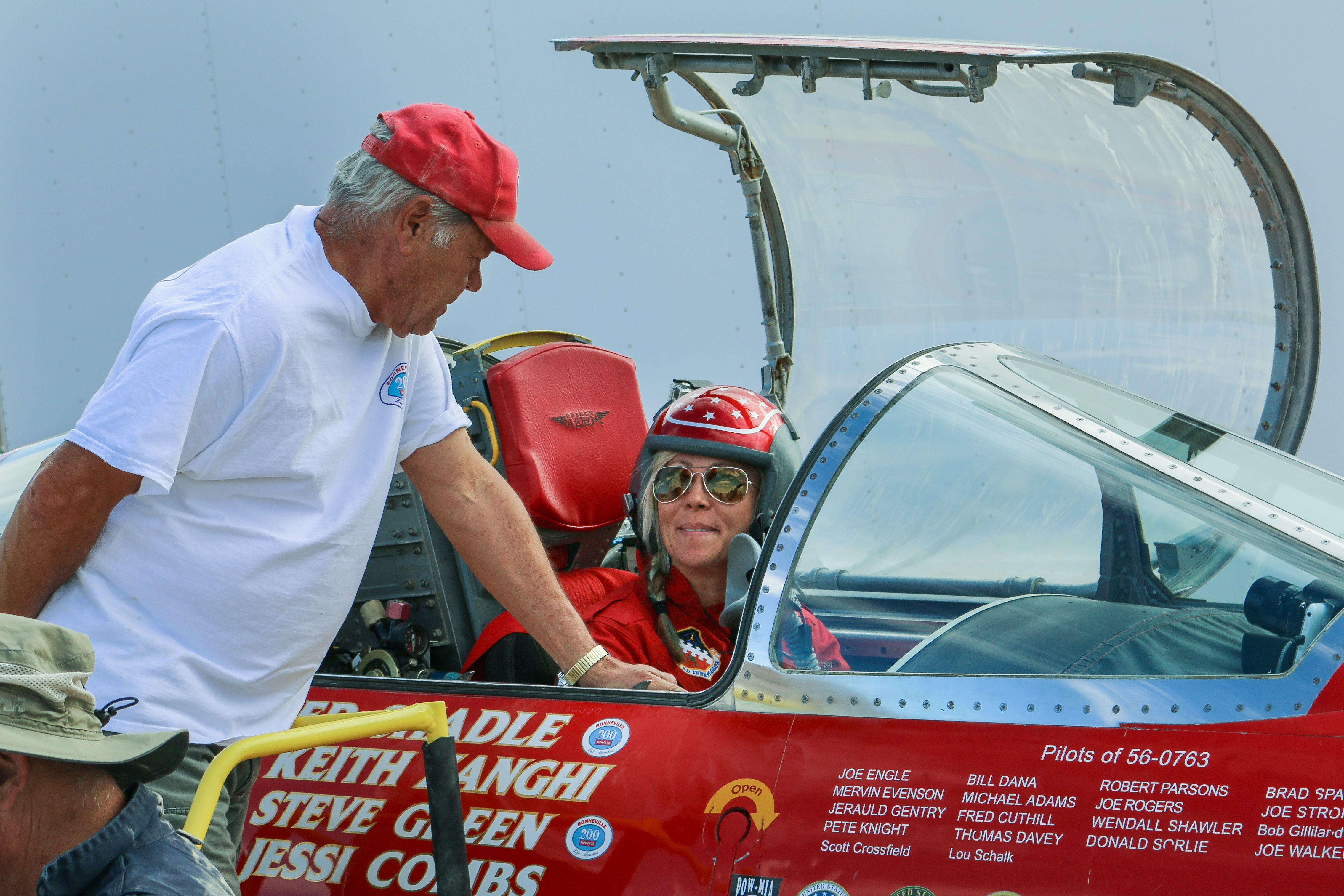
During her speed run, Combs safely endured a frightening setback when the car drifted slightly off course. When moving that fast, movement appears subtle with few reference points to judge where you are. As soon as Combs realized where she was and that she couldn’t correct back to the proper course, she quickly aborted the mission. But by the end of the run, the Eagle had come dangerously close to the edge of the track, due to a couple of malfunctioning systems.
Calm and collected throughout the ordeal, Combs still remains determined to continue her goal of breaking the women’s record of 512 miles per hour, set in 1976. Combs also remains the fastest woman on four wheels, a record she broke in 2013.
“We go back to the drawing board,” she says.
Combs’ milestone was a thrilling showcase of engineering, beginning with the Eagle itself, a 17-year project that transformed a junked, mid-century F-104 Starfighter into an aerodynamic marvel capable of generating 42,500 horsepower. Innovative engineering by Microsoft also gave fans a live window to the Eagle in afterburner glory, with a global, streaming broadcast of G-force and speed, with Combs in the cockpit.
The real-time telemetry reached a worldwide audience in a fraction of a second. But even more impressive: 500 million data points of live telemetry broadcast to 4,500 people from a machine screaming across a barren land, devoid of Internet, electricity and cell towers.
Let this be a testament that girls can do anything they set their minds to.
“The North American Eagle is a story of conquering insurmountable odds to challenge assumptions about what is possible, and we want to do the same,” says Matt Long, a Microsoft software engineer who created the broadcast system with Mark Nichols, a cloud solution architect at Microsoft. The scientists are known for The Pegasus Mission, their research project that recently streamed live telemetry from the stratosphere. It was a showcase of real-time Internet of Things (IoT) in extreme conditions.
“We’ve gone 21 miles into the upper atmosphere. We want to go 700-plus miles per hour on land. And at some point, we want to go 2 miles below the ocean,” says Long, who is partnering with Microsoft Research. His tagline for the Pegasus Mission’s blog: “Dare Mighty Things.”
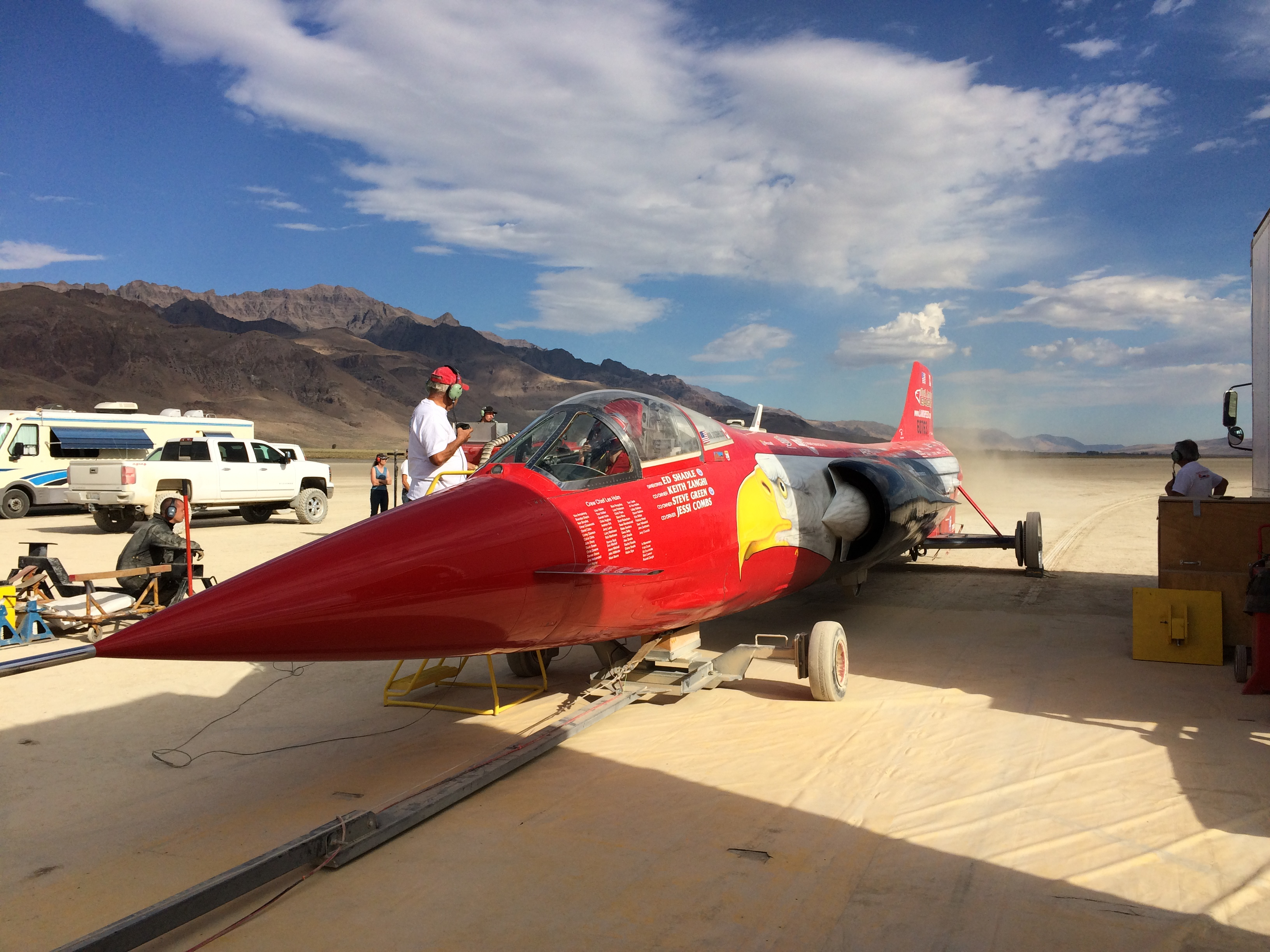
Combs’ latest run brought the Eagle team one step closer to its ultimate goal of breaking the sound barrier and running the fastest car in history. Eagle owner Ed Shadle and his volunteer crew have been working to drive the Eagle at 800 miles per hour, ever since he and friend Keith Zanghi salvaged an old Lockheed fighter jet in 1998. The current “absolute” land speed record is 763 miles per hour, set by a British team in 1997.
“It’s very difficult to do. You have to solve problems all along the way to achieve this goal, and it’s the kind of thing that people with engineering minds love to do. It’s a challenge,” says Shadle, a pilot, Air Force veteran and former field engineer.
To make the Eagle go faster more safely, the team has built a high-performance hydraulics steering system and developed a magnetic braking system in combination with space-age parachutes. The vehicle also has custom wheels that can endure a speed of 800 miles per hour.
For the Pegasus Mission scientists, the telemetry gave people an inspiring view of what science, technology, engineering and math (STEM) can achieve, while demonstrating the power and innovation of Microsoft technologies. With Windows 10 IoT Core, Nichols built a small sensor device for the cockpit that sent telemetry and received messages in real time, including ones from well-wishers in Russia and Australia. The team also built mobile apps with Xamarin. The Eagle’s custom telemetry system, which captures nearly 60,000 data measurements per second, uploaded data to Microsoft Azure for analysis with Cortana Intelligence.
“By taking these challenging situations and using different concepts in technology, we are able to do things that have never been done before,” says Long. “Customers can then use their own imaginations to come up with new things to compete with in the marketplace.” He envisions all kinds of potential IoT scenarios. A system of oil rigs that talk and listen to one another. A balloon mission in Antarctica that sends live telemetry to a global audience.
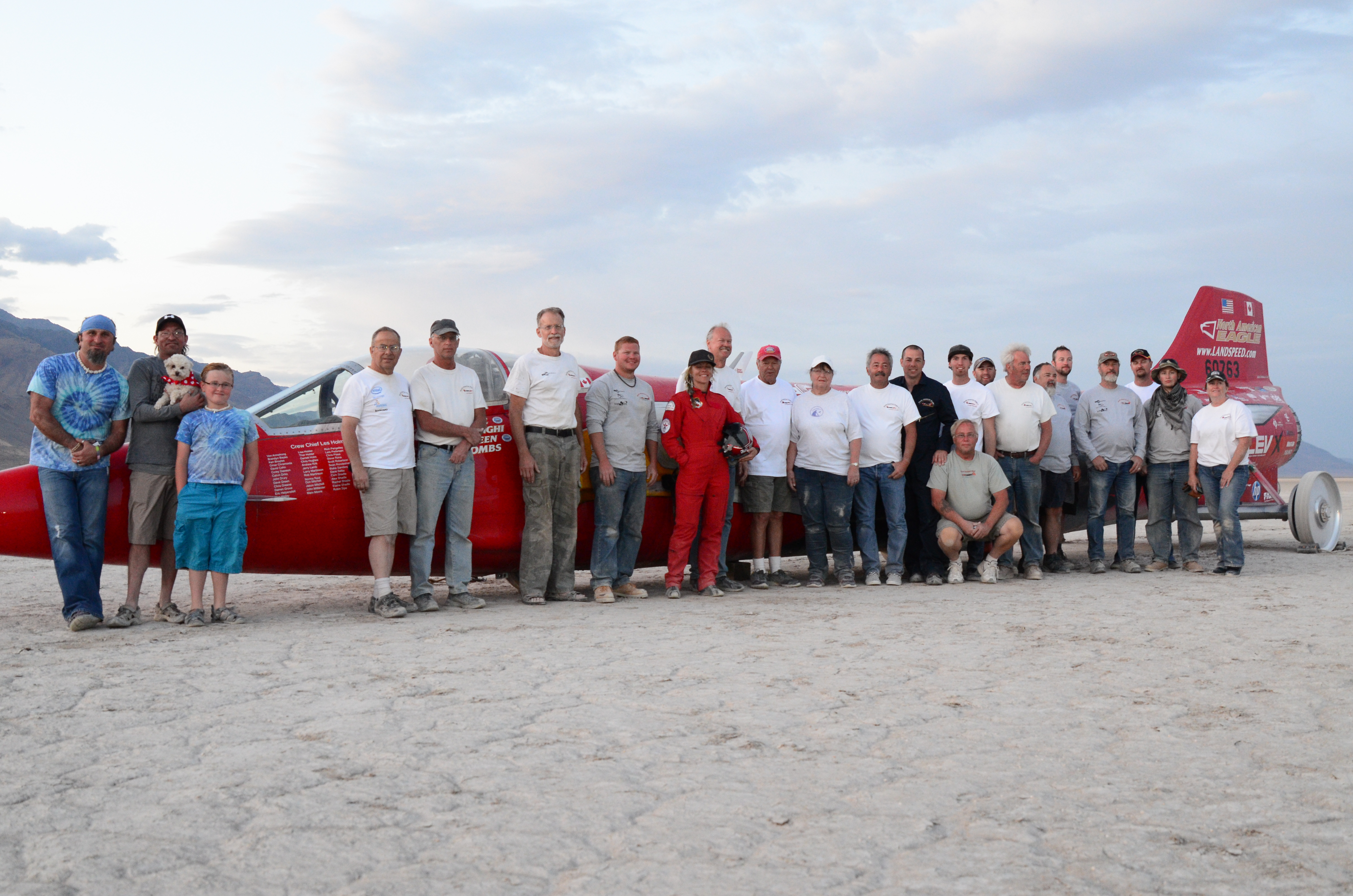
For Combs, the broadcasts connected people to an inspirational story of hard work and innovation, despite the issues she encountered. She views her accomplishments in a male-dominated sport as encouragement for everyone to push boundaries and do amazing things.
“There are very few people who’ve driven over 400 miles per hour, so when we can allow people to be in the cockpit with us and experience it from the comfort of their living room or office chair, it’s really cool to share that experience,” says Combs. “I’ve been able to make a massive difference in the world because of what the North American Eagle can do.”
Lead image: The North American Eagle on a speed run in the Alvord Desert (photo by Eric Wittler).






